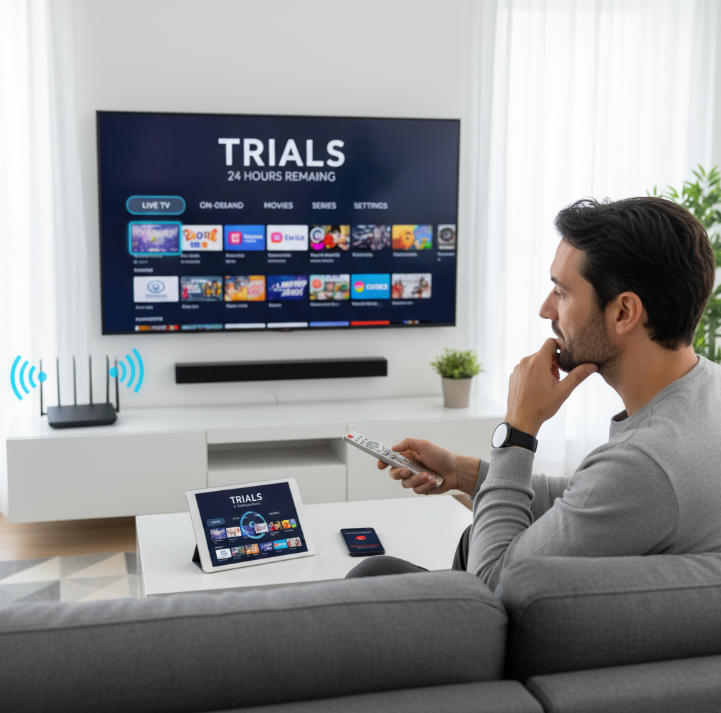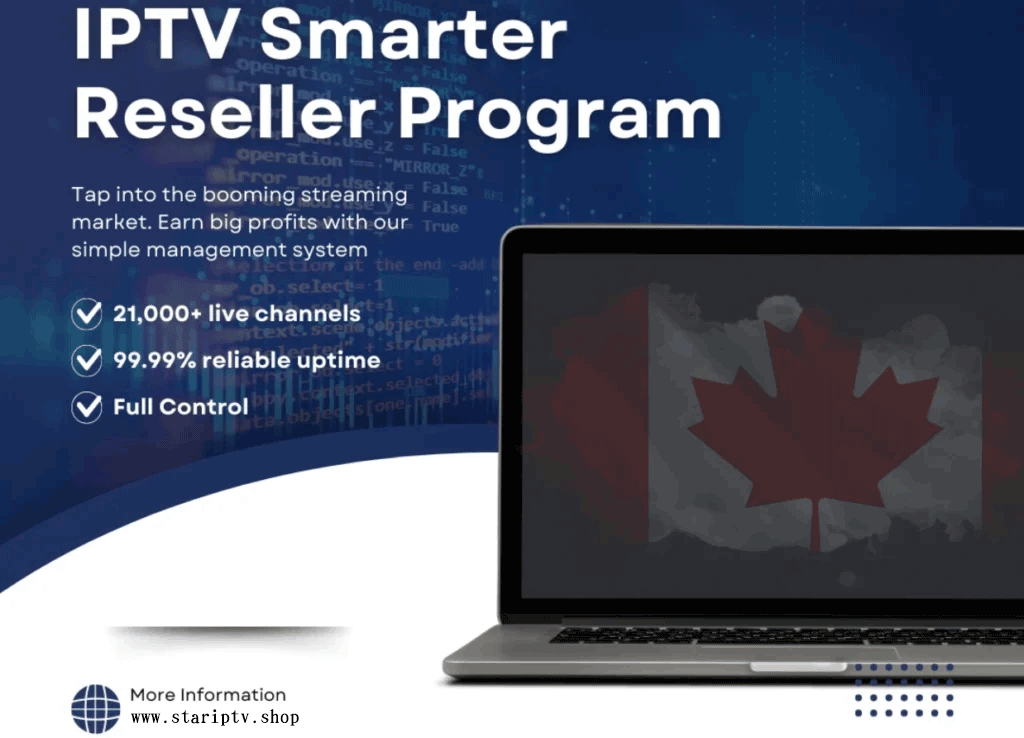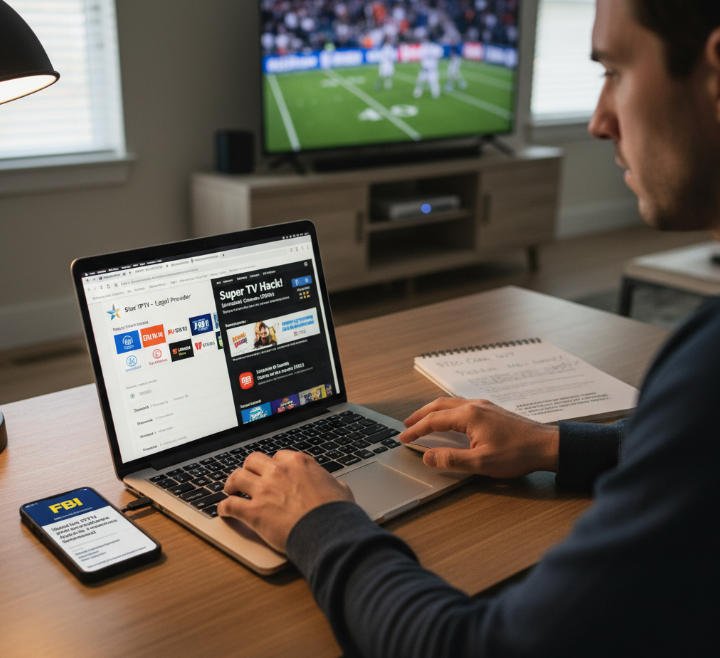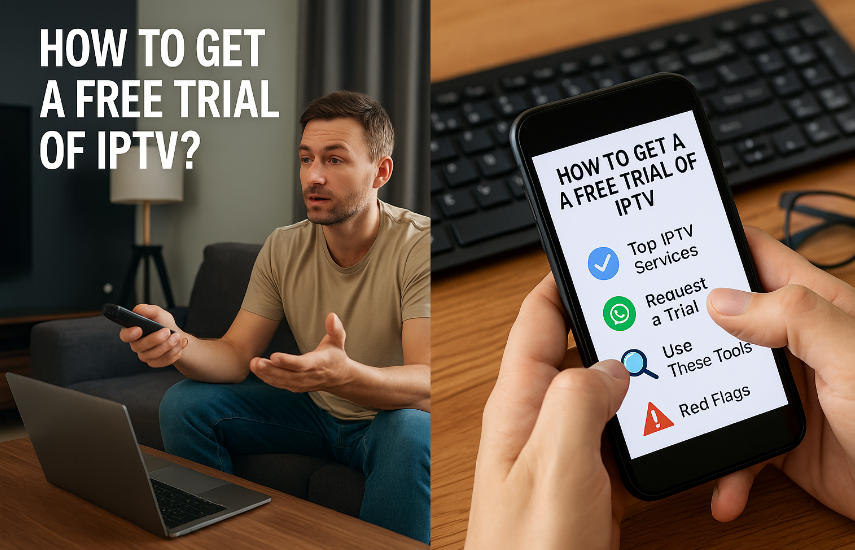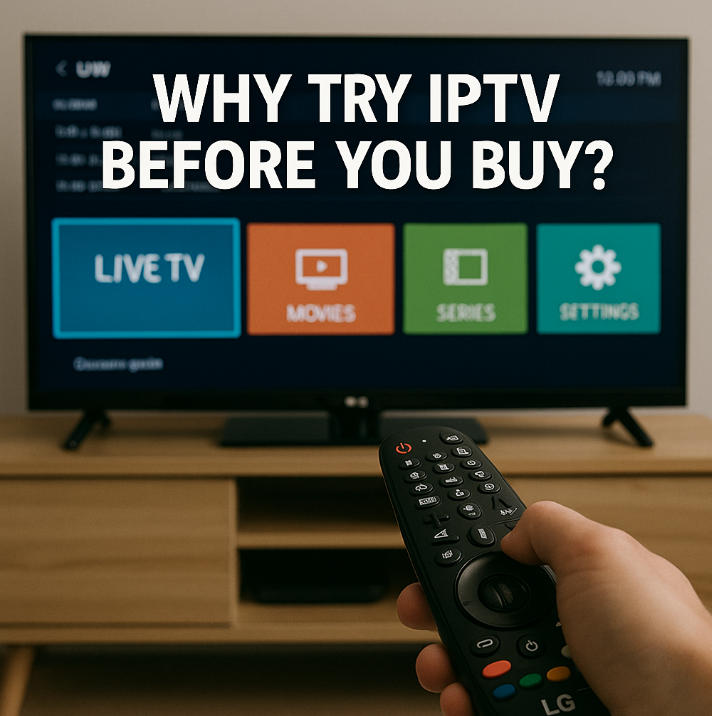It’s 2025, and an IPTV trial is your golden ticket to test-drive a streaming service before handing over your wallet. Think of it like sampling a bite before ordering the whole meal — but not every bite is worth it. Some leave you hungry, others leave you buffering.
You want the good stuff: clear picture, no lag, and content that actually matters. But too often, people jump into trials that look shiny on the surface and fall flat fast — missing key features or choking when the Wi-Fi gets busy. For a deeper primer on how IPTV streaming works and what to expect in a trial, see StarIPTV’s knowledge resources.
Here’s the deal: not all IPTV trials are built the same. Some are locked behind confusing setups or work great on a phone but bomb on your TV. Others promise “all the channels” and give you 10.
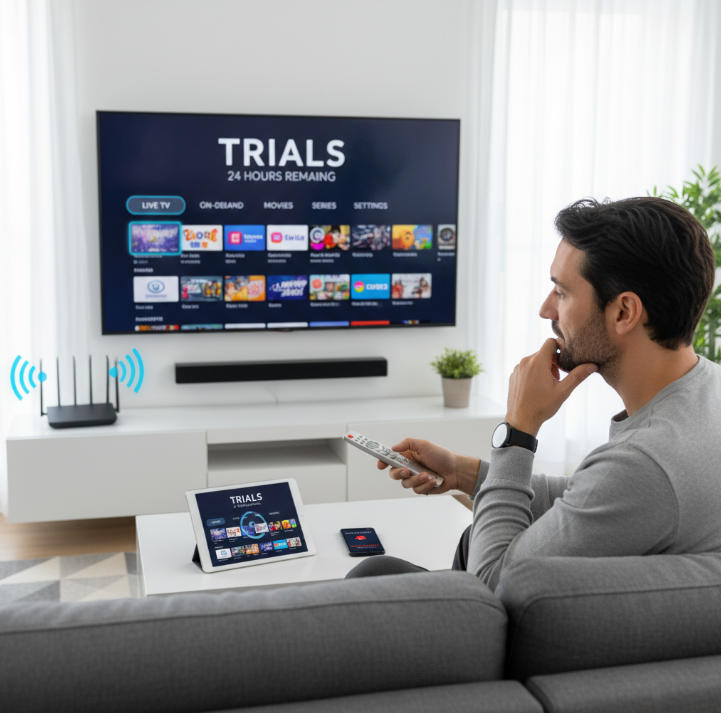
“Users don’t just want fast — they want flawless,” says Carlos Mendez, Senior Engineer at Star IPTV. “If the trial isn’t smooth, the service won’t be either.”
5 Key Factors to Choose the Right IPTV Trial
This chapter breaks down the non-negotiables when picking IPTV trial options for 2025. Perfect for businesses looking to offer solid wholesale streaming packages. If you’re evaluating for bulk purchasing, StarIPTV’s IPTV subscription page outlines package tiers and device support in one place.
Choosing IPTV Services by Streaming Type
Not all streaming types are built the same. If you're diving into IPTV trials, it helps to understand what you're actually testing:
Live Streaming: Perfect for sports and news. Needs low latency and strong bandwidth support. Technologies like Low-Latency HLS and CDN delivery help keep delays down.
VOD (Video on Demand): Great for movie buffs. Users want fast load times and crystal-clear resolution. For network context, Netflix recommends 5 Mbps for 1080p and 15 Mbps for 4K UHD (official guidance).
Catch-up TV: Allows users to view past programs. Handy for time-zone flexibility and rewatchable content.
OTT Services (Over-the-top): Delivered over public internet—easier to deploy but might struggle with high-demand traffic spikes.
"IPTV isn’t a one-size-fits-all. You’ve got to match the protocol and delivery model to your audience’s habits," says Liu Cheng, Product Manager at Star IPTV. For foundations, see What is IPTV in the knowledge base.
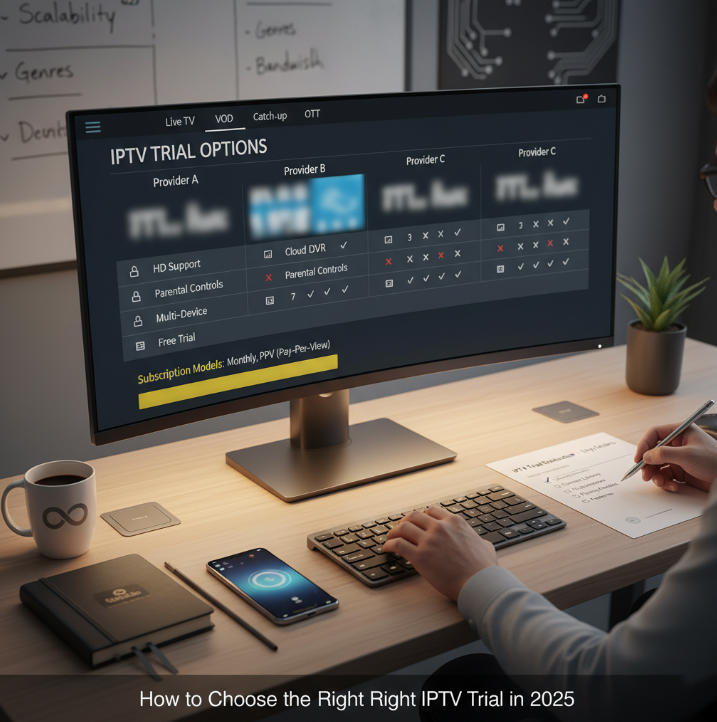
Evaluating Content Genres: Sports, Movies, and More
When you're trialing IPTV for resale or deployment, here's what genre-based evaluation should cover:
1. Sports
Demands: Live access, HD quality, low latency (consider LL-HLS or WebRTC where available).
Popular for: Wholesale to bars, gyms, and sports cafés
2. Movies & Drama
Requires: VOD support, clear categorization, premium add-ons
Must-have for: Family-based subscribers
3. News & Documentaries
Needs: Real-time updates, multilingual feeds
Ideal for: Multicultural or older audiences
4. Kids & Entertainment
Must include: Parental controls, age filtering
Best for: Bundle upsells in family markets
Think of this as your genre checklist before saying yes to a provider. If you plan to scale, compare with StarIPTV’s mix of Live TV, VOD, and EPG as outlined in their service overview.
Understanding Feature Sets: DVR, HD, Parental Controls
If your IPTV trial doesn't include these 3 key features, it's probably not worth scaling up:
1. Cloud DVR
Offers record/playback functionality
Perfect for on-the-go users or shifting schedules
2. HD and 4K Support
Essential for modern displays
Affects user satisfaction more than you think (again, see Netflix’s speed/quality table for realistic bandwidth benchmarks).
3. Parental Controls & EPG
Parents demand age filters
EPG (Electronic Program Guide) keeps navigation clean; formal definitions and best practices are discussed here: Electronic program guide and JW Player’s EPG setup notes for apps (guide).
Here's a table comparing 3 popular IPTV trials on core features:
| Provider | HD Support | DVR Included | Parental Controls |
|---|---|---|---|
| StreamCast Pro | ✅ | ✅ | ✅ |
| MaxVision Go | ✅ | ❌ | ✅ |
| NovaIPTV | ❌ | ✅ | ❌ |
Use this during your trial period to test what your customers will actually experience. For a structured walkthrough of trial features, StarIPTV’s IPTV free trial explainer can help align expectations.
Subscription Models: What Wholesale Buyers Should Know
Subscription models can make or break your wholesale IPTV margin. Let’s break it down:
Free Trials: Great for testing, but watch out for limits (channels, time, or device access). See StarIPTV’s trial overview for bulk buyers for what’s typically included.
Monthly Subscriptions: Common for retail. Not ideal for resellers without special B2B pricing.
Annual Plans & Bundled Packages: More stable for wholesale agreements. Often comes with licensing perks — review available tiers on the IPTV Packages page.
Pay-per-view (PPV): Perfect for premium sports/events. Useful for clients with unpredictable demand.
According to the 2024 Global IPTV Market Insights Report, “Over 68% of wholesale IPTV clients prioritize licensing flexibility and bundled pricing to remain competitive.” When evaluating trials, always ask for wholesale-specific documentation. Don’t assume retail terms will scale.
Streaming Without Buffering — IPTV Trial Solutions That Work
This chapter gets real about fixing the #1 pain point during IPTV trials — buffering. Let's dive into how to keep your streams smooth from day one. If you need a checklist-style setup, StarIPTV’s IPTV setup guide is a practical starting point.
How Network Bandwidth Affects IPTV Streaming Quality
Ever noticed the video getting blurry or laggy? It’s not always the app—it’s often the network bandwidth doing you dirty. Here's the lowdown:
A poor bitrate means lower video resolution, so your 4K stream may drop to 720p.
Buffering kicks in when your internet can’t keep up with the stream’s bitrate demands.
To stream IPTV at full throttle (HD or 4K), your internet speed needs to be solid—not just on paper, but in real-time usage. As a baseline, Netflix recommends ~5 Mbps for 1080p and 15 Mbps for 4K (official table); households with multiple streams often need significantly more aggregate bandwidth (reference).
Quick tip: Run a speed test during peak hours. That’s the real story, not what your ISP advertises. You can measure with Speedtest by Ookla on iOS or Android (note: availability can vary by country).
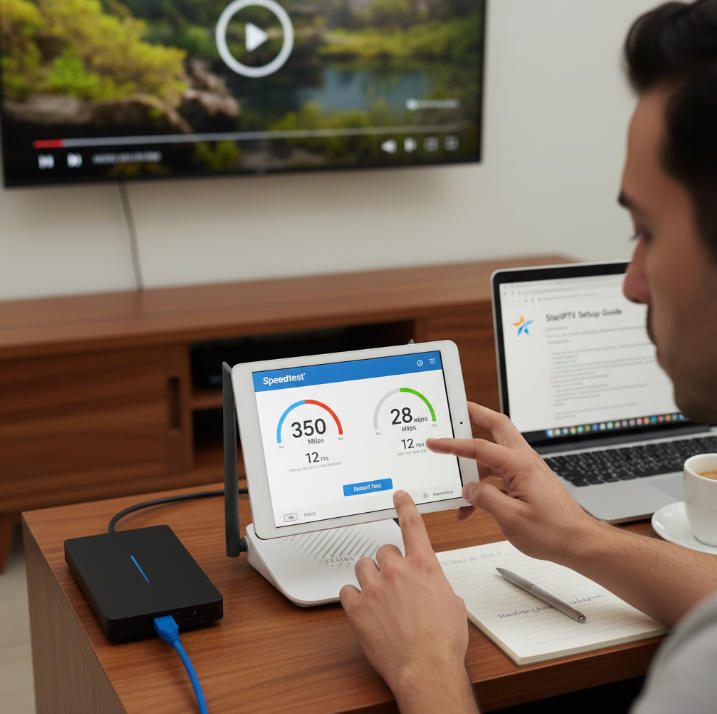
Overcoming Latency in Live TV and Catch-up Services
When watching Live TV or even Catch-up content, a few seconds delay feels like forever—especially for sports or news. Here’s how smart setups fight back:
Use CDNs: A strong Content Delivery Network routes video through faster, local nodes (what a CDN does and how CloudFront reduces latency via global PoPs](target="_blank" rel="nofollow noopener" https://aws.amazon.com/cloudfront/)).
Real-time streaming tech: Like HLS Low-Latency or WebRTC — helps content arrive sooner, not later.
Smart buffering: Some IPTV apps dynamically manage buffer times to reduce lag spikes.
“The biggest latency killer isn’t your device — it’s often poor CDN routing,” says Milan Ortiz, Senior Network Engineer at Star IPTV. For engineering-grade context on streaming QoE, see IETF’s overview of operational considerations for streaming media (RFC 9317).
This stuff matters when your users don’t want to hear spoilers before seeing the goal.
Connectivity Tips for Reliable IPTV Trials
Flaky Wi-Fi? Old router? Here’s how to boost your IPTV trial’s connection without fancy gear:
| Device Type | Best Connection Method | Notes | Optimization Tip |
|---|---|---|---|
| Smart TV | Ethernet | Most stable for HD streaming | Avoid shared Wi-Fi channels |
| Smartphone/Tablet | Wi-Fi (5GHz preferred) | Portable but less stable | Stay close to router |
| Desktop/Laptop | Ethernet/Wi-Fi | Depends on placement | Use wired where possible |
Adjust router settings (like QoS) to prioritize IPTV bandwidth — modern routers include easy QoS toggles (Wired primer).
Avoid streaming over crowded 2.4GHz networks; prefer 5GHz for higher throughput (Centurylink explainer).
Ethernet always wins when it comes to consistent, high-quality streams.
Bottom line? Fixing trial buffering often starts with improving home or office connectivity, not blaming the IPTV service. For step-by-step device setup, see StarIPTV’s concise IPTV setup guide.
Easy Guide: Setting Up IPTV Trial on Smart Devices
A smooth IPTV trial depends on easy setup across all your favorite screens — from Smart TVs to desktops. Here's how to get rolling, glitch-free. If you prefer a walkthrough, bookmark the setup guide and What is IPTV pages.
IPTV Trial Setup for Smart TVs and Streaming Devices
Getting started on Smart TVs and streaming devices like Fire Stick or Roku isn’t rocket science — but skipping the basics can mess up the whole test.
Most IPTV trials support native or sideloaded apps on Smart TVs.
For Streaming devices, use official app stores or install APKs manually.
Always check if your Smart TV OS (Tizen, webOS, Android TV) is compatible.
Here’s a quick reminder: Some IPTV trial providers require manual activation or MAC address pairing, especially for smart displays. Keep that info handy during setup. (If you’re trialing StarIPTV, see their IPTV streaming FAQ for device coverage and activation steps.)
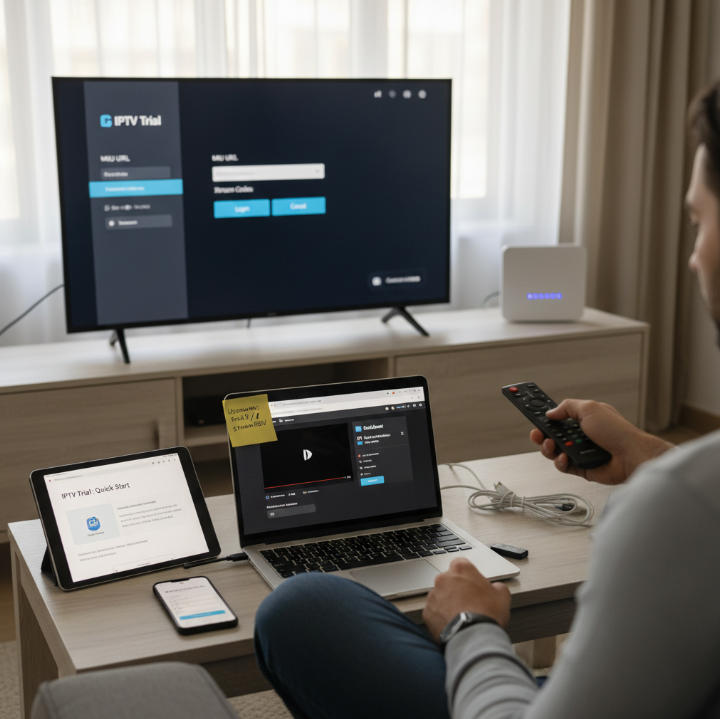
Configuring IPTV Apps on Smartphones and Tablets
Most people test IPTV apps on their phones first — makes sense, it’s fast and portable. But don’t skip the right steps if you want stable performance.
Download IPTV apps from Google Play or the App Store (like TiviMate, IPTV Smarters).
Choose either M3U or Xtream Codes API login (providers usually give both).
Adjust app settings for resolution, data usage, and parental controls.
For Android: Allow permissions and optimize for battery.
For iOS: Enable background refresh and check auto-login settings.
Don’t forget to test on both mobile data and Wi-Fi — trial results can vary big time. If your 5GHz network isn’t showing or drops frequently, common fixes include moving closer to the router, checking adapter support, and updating drivers (troubleshooting notes).
Trial Compatibility with Laptops and Desktops
Laptops and desktops are still powerhouses for IPTV trials, especially when evaluating web-based players or dashboard controls. Here's what to check:
| Device Type | OS | IPTV Player Type | Notes |
|---|---|---|---|
| Laptop | Windows 11 | Web-based / VLC | Best for control panel testing |
| Laptop | macOS | VLC / GSE Smart IPTV | App support is slightly limited |
| Desktop | Windows 10 | IPTV Web Player | Good for resolution testing |
| Desktop | macOS | Safari & Chrome | M3U links may need plugins |
Pro Tip: Run simultaneous tabs and test multiple playlists for streaming consistency and buffering behavior. You can even compare live streams and Video on Demand side by side. Bandwidth needs compound quickly in multi-stream scenarios (speed planning tips).
Activating Simultaneous Streams Across Multiple Devices
Let’s be honest — testing with just one screen won’t cut it. Most IPTV trials limit the number of devices or streams. Here’s how to test multi-device functionality like a pro.
Try streaming the same channel on two or three devices at once (TV, tablet, phone).
If playback fails or logs you out, it means the stream limit is being hit.
Most IPTV trials cap at 2–3 simultaneous streams; some use IP locking.
“In our internal tests, accounts that exceeded three devices often faced soft bans or reduced stream quality,” — Arjun Patel, Network Analyst at Star IPTV
Don't forget to track device IPs and test how switching networks (e.g., from home Wi-Fi to mobile data) affects access. This reveals how aggressively trial systems enforce access limits. For bulk deployments, align test results with StarIPTV’s Reseller & Bulk Solutions overview.
Which IPTV Trial Gives You the Most HD Channels?
High-Definition Support in Sports and Reality TV
Want the crispest streams when you’re testing IPTV? This part breaks down where to find HD magic — and where it falls flat.
HD Really Matters, Especially in Sports
You don't want blurry goals or choppy touchdowns. When it comes to sports, HD streaming isn’t a luxury — it’s the bare minimum for any trial worth taking seriously. Look for IPTV trials offering a minimum 1080p resolution for major sports networks. Aim for 60fps when possible — protocol and player choices (e.g., LL-HLS) are critical for motion-heavy content.
Reality TV in HD = Better Viewer Stickiness
Reality shows thrive on emotion — facial expressions, fast reactions. If your trial lacks good frame rate and HD clarity, you’re missing the entire emotional punch.
Watch the Frame Rate, Not Just the Resolution
A lot of folks chase resolution numbers, but if your stream runs at 30fps instead of 60fps, sports look jagged and off. For live content like matches and competitions, frame rate + resolution = total HD quality.
Buffering Destroys the Experience
HD isn’t HD if it’s constantly buffering. It might be sharp for a second, then frozen the next. That’s a bad trial. Choose services optimized for stable HD delivery even on mid-bandwidth connections; CDN edge caching and adaptive bitrate (CloudFront streaming overview) help here.
"Our Q1 user retention data showed a 32% higher trial-to-subscription conversion rate for services offering 60fps HD sports channels."
— Maria Koh, Product Director at Star IPTV, via internal subscriber analytics report (2025)
Premium Channel Access During IPTV Free Trials
Not all free trials are created equal. Here’s what to keep your eyes on when testing premium channel access.
Genre Breadth
The more varied your premium lineup, the more hooks you’ve got. Sports packages? Check. Movie networks? Double check. Great trials won’t just show off ESPN or HBO — they’ll give you a taste of everything.
Time-Limited Access
A common tactic: some trials give premium access but only for the first 24 hours. That’s not a test, that’s a tease. Look for trials offering 3–7 days of full access across premium content libraries.
Locked vs. Unlocked Titles
Pay attention to the difference between “available channels” and playable content. Many IPTV trials will show the premium channel in the guide, but lock the content. That’s shady UX.
Content Library Depth
Just because a channel is available doesn’t mean the good stuff is. Test the on-demand libraries for top movies, full drama series, or box sets. If all you get is old reruns, the “premium” tag is meaningless.
Bundled Premium vs. À la Carte Previews
Some services give access to full channel bundles; others just cherry-pick. For wholesale consideration, go with providers that preview entire content blocks — this helps gauge licensing breadth. To benchmark your expectations, StarIPTV’s What is IPTV: Ultimate Guide consolidates core concepts and trial best practices.
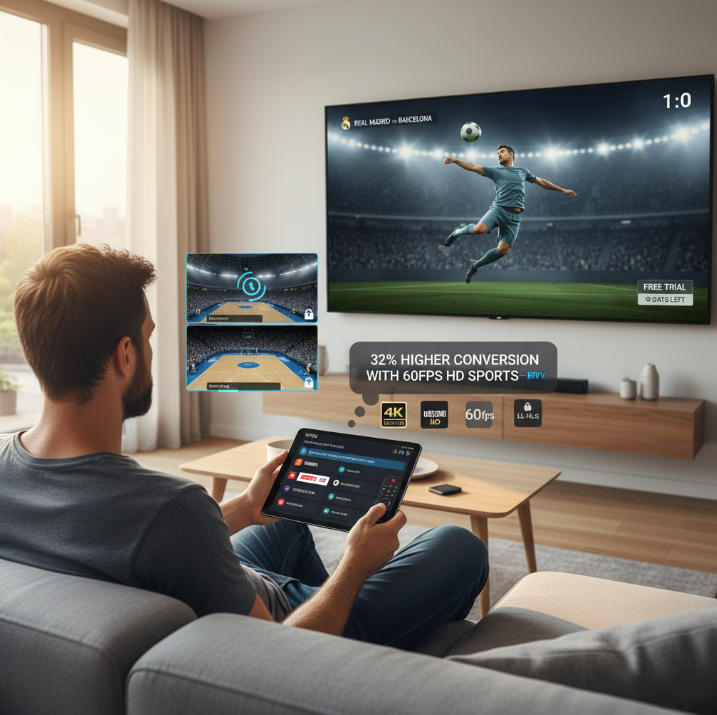
6 Mistakes to Avoid During an IPTV Trial
Taking a free IPTV trial? Don't waste the chance. These mistakes kill your test-drive before it even starts.
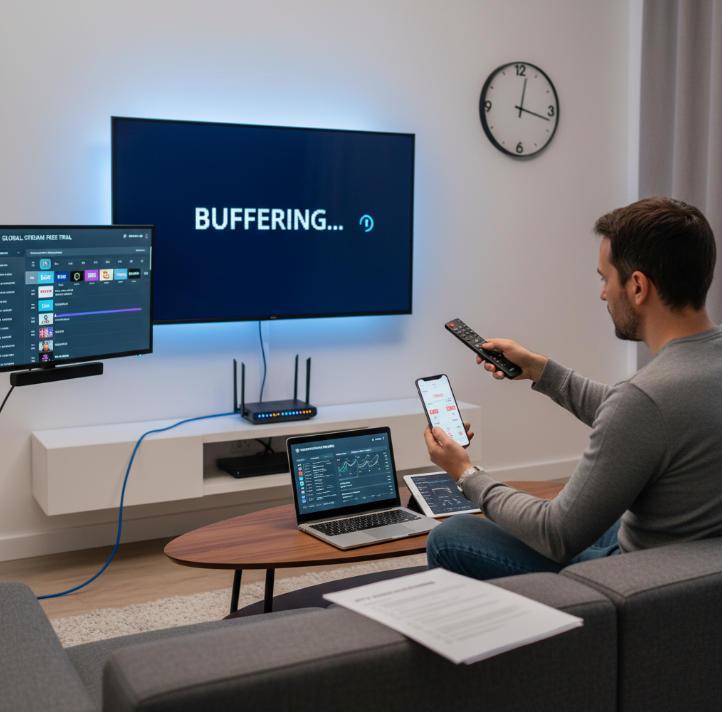
Skipping Device Compatibility Checks
Let’s be honest — testing IPTV on one device and hoping it works everywhere is wishful thinking. Here’s why skipping compatibility tests will bite you:
Not all smart TVs run IPTV apps natively. Samsung’s Tizen? LG’s webOS? Total wild cards unless verified.
Streaming sticks and consoles behave differently. Your Fire Stick might stream fine, but try it on a PlayStation and boom — unsupported codec errors.
App version chaos. IPTV trials often push updated apps to Android but leave iOS lagging.
Tablet users often get a different interface with missing features like cloud DVR or EPG (background on EPGs: overview).
Tip: Test on at least three device types (e.g., Smart TV, smartphone, streaming stick). Always include both Wi-Fi and Ethernet setups if you're offering wholesale IPTV. StarIPTV’s IPTV setup guide can speed up this checklist across device categories.
Ignoring Network Performance Metrics
Most users blame the service when buffering kicks in — but 80% of trial failures are due to network underperformance, not bad IPTV providers.
“In 2024, Star IPTV’s quality team found that latency spikes above 100ms during trials led to a 32% user drop-off — even when content was stable.”
— Jae Lin, Head of Performance Engineering, Star IPTV
Here's what you're likely ignoring:
Download Speed: Below 25 Mbps? HD struggles, 4K crawls (see Netflix’s speed guidance).
Latency: Above 80–100ms? Live Sports = delayed reactions (see RFC 9317 QoE notes). IETF Datatracker
Packet Loss: A silent killer — causes random dropouts.
Wi-Fi Interference: Common in shared buildings or office trials (opt for 5GHz over 2.4GHz when possible).
Test your IPTV trial in peak hours (evening) and on mobile data. This mimics real-world chaos — which your customers will live in every day. For router-level tweaks, enabling QoS can prioritize streams (how QoS helps).
Underestimating Trial Time Limits in Free Models
Free IPTV trials aren’t all equal. Misunderstanding the trial window can kill your evaluation before it starts. Let’s break it down:
1. Access Duration
Some “3-day trials” are really 72-hour timers from activation, not first use.
2. Feature Gating
DVR, HD streaming, and certain genres (like Documentaries or Kids content) are often locked in trials. You're not seeing the full picture.
3. Time-of-Day Restrictions
Off-peak-only access? That’s a red flag. It won’t simulate real user load or performance during high-traffic streaming times.
4. Trial Fatigue
Users only watching a single genre or device in a short window (e.g., bingeing Movies on a laptop) miss out on how the service behaves in broader scenarios.
What to do:
Always ask the provider for full trial conditions upfront
Build a simple content + device test checklist for your team
Use multi-user testing across family/work setups to simulate bulk usage
If you need a vetted starting point, StarIPTV offers an IPTV free trial and transparent pricing for scaling beyond the trial.
Conclusion
Sorting through IPTV options can feel like shopping for a car without a test drive—frustrating and risky. That’s why this guide walked you through what really matters: picking the right features, avoiding trial traps, and making sure streaming quality holds up when it counts. Because buffering mid-game? No one has time for that.
If you're serious about locking down a quality IPTV trial, don’t just skim the surface. Run your tests across devices—Smart TVs, tablets, even grandma’s laptop. Try different genres like Sports, Kids, or News, and keep an eye on bandwidth and HD support. This isn’t just a tech test—it’s a business decision. To move from trial to deployment with a provider that emphasizes anti-freeze tech, global CDNs, and multi-device support, compare packages on the IPTV subscription page and review the What is IPTV guide for setup tips.
Streaming in 2025 is a whole new ballgame. Make your trials count.
What should I check before starting an IPTV trial?
Look at the mix of Live TV, VOD, and Catch-up TV
Make sure it runs on your Smart TV, phone, or laptop
Check how long the trial lasts and what’s included
See if Cloud DVR, HD, or multi-device streams are active
Note what the plan costs once the trial ends
How does buffering impact IPTV trial performance?
Often caused by slow internet or high latency
Shows up most on Live TV or sports channels
Test at different times of day to see patterns
Compare quality on more than one device
Watch for drops in resolution or long load times
Which devices are compatible with IPTV trial services?
Smart TVs: Samsung, LG, Android TV
Streaming sticks: Roku, Fire Stick, Apple TV
Phones & tablets: iOS and Android
Computers: Windows or macOS browsers or apps
Consoles: some support, often needs sideloading
What features matter most when testing IPTV platforms?
HD and 4K streaming
Multi-device streaming
Cloud DVR and an easy program guide
Parental controls and user profiles
Offline viewing or downloads (less common)
What are common mistakes businesses make during IPTV trials?
Skipping internet speed checks
Not testing on every device they’ll use later
Assuming free trials show all premium channels
Missing limits on streams or region locks
Rushing the evaluation too quickly
How long do IPTV trials usually last?
Most trials run from one day to a week. Some bulk or wholesale plans allow longer test periods if you ask the provider directly.
Can I test premium channels during a free IPTV trial?
Some give short access to sports or drama channels. Others hold them back for paying users. Always look at the channel list before signing up.
What genres are typically included in IPTV trials?
Sports, News, Entertainment, Kids, and Reality TV are common. Pay-per-view or special premium content may be limited.
Are catch-up TV and DVR available in trial versions?
Catch-up TV often works in trials. Cloud DVR may be limited or disabled, so check if recording functions are open before testing.
Does network speed affect IPTV performance?
Yes. Slow or unstable internet can cause buffering, blurry streams, or lagging audio — especially for HD or live channels during a trial.
